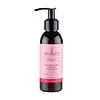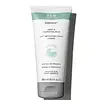What's inside
What's inside
 Key Ingredients
Key Ingredients

 Benefits
Benefits

 Concerns
Concerns

 Ingredients Side-by-side
Ingredients Side-by-side

Water
Skin ConditioningAloe Barbadensis Leaf Juice
Skin ConditioningSesamum Indicum Seed Oil
EmollientCetearyl Alcohol
EmollientGlycerin
HumectantCetyl Alcohol
EmollientCeteareth-20
CleansingRosa Canina Fruit Oil
EmollientOenothera Biennis Oil
EmollientSantalum Acuminatum Fruit Extract
AntioxidantBorago Officinalis Seed Oil
EmollientCamellia Oleifera Seed Oil
Skin ConditioningButyrospermum Parkii Butter
Skin ConditioningTocopherol
AntioxidantLavandula Angustifolia Oil
MaskingCitrus Nobilis Peel Oil
MaskingCitrus Tangerina Peel Oil
MaskingVanillin
MaskingPhenoxyethanol
PreservativeBenzyl Alcohol
PerfumingLimonene
PerfumingLinalool
PerfumingWater, Aloe Barbadensis Leaf Juice, Sesamum Indicum Seed Oil, Cetearyl Alcohol, Glycerin, Cetyl Alcohol, Ceteareth-20, Rosa Canina Fruit Oil, Oenothera Biennis Oil, Santalum Acuminatum Fruit Extract, Borago Officinalis Seed Oil, Camellia Oleifera Seed Oil, Butyrospermum Parkii Butter, Tocopherol, Lavandula Angustifolia Oil, Citrus Nobilis Peel Oil, Citrus Tangerina Peel Oil, Vanillin, Phenoxyethanol, Benzyl Alcohol, Limonene, Linalool
Water
Skin ConditioningCetearyl Ethylhexanoate
EmollientCetearyl Alcohol
EmollientCaprylic/Capric Triglyceride
MaskingSesamum Indicum Seed Oil
EmollientButyrospermum Parkii Butter
Skin ConditioningMyristyl Myristate
EmollientGlycerin
HumectantCetearyl Glucoside
EmulsifyingRibes Nigrum Seed Oil
EmollientHelianthus Annuus Seed Oil
EmollientSodium Stearoyl Glutamate
CleansingOryzanol
Skin ConditioningBisabolol
MaskingMyristyl Laurate
Hippophae Rhamnoides Fruit Extract
Skin ConditioningCalendula Officinalis Flower Extract
MaskingTocopherol
AntioxidantXanthan Gum
EmulsifyingPhenoxyethanol
PreservativeCitrus Nobilis Peel Oil
MaskingAnthemis Nobilis Flower Oil
MaskingSodium Dehydroacetate
PreservativeCinnamomum Camphora Linalooliferum Leaf Oil
PerfumingPelargonium Graveolens Flower Oil
MaskingFoeniculum Vulgare Fruit Extract
EmollientEthylhexylglycerin
Skin ConditioningGlucose
HumectantParfum
MaskingRosmarinus Officinalis Leaf Extract
AntimicrobialCitric Acid
BufferingCitronellol
PerfumingLimonene
PerfumingLinalool
PerfumingWater, Cetearyl Ethylhexanoate, Cetearyl Alcohol, Caprylic/Capric Triglyceride, Sesamum Indicum Seed Oil, Butyrospermum Parkii Butter, Myristyl Myristate, Glycerin, Cetearyl Glucoside, Ribes Nigrum Seed Oil, Helianthus Annuus Seed Oil, Sodium Stearoyl Glutamate, Oryzanol, Bisabolol, Myristyl Laurate, Hippophae Rhamnoides Fruit Extract, Calendula Officinalis Flower Extract, Tocopherol, Xanthan Gum, Phenoxyethanol, Citrus Nobilis Peel Oil, Anthemis Nobilis Flower Oil, Sodium Dehydroacetate, Cinnamomum Camphora Linalooliferum Leaf Oil, Pelargonium Graveolens Flower Oil, Foeniculum Vulgare Fruit Extract, Ethylhexylglycerin, Glucose, Parfum, Rosmarinus Officinalis Leaf Extract, Citric Acid, Citronellol, Limonene, Linalool
 Reviews
Reviews

Ingredients Explained
These ingredients are found in both products.
Ingredients higher up in an ingredient list are typically present in a larger amount.
This ingredient is also known as shea butter. It is an effective skin hydrator and emollient.
Emollients help soothe and soften your skin. It does this by creating a protective film on your skin. This barrier helps trap moisture and keeps your skin hydrated. Emollients may be effective at treating dry or itchy skin.
Shea butter is rich in antioxidants. Antioxidants help fight free-radicals, or molecules that may harm the body. It is also full of fatty acids including stearic acid and linoleic acid. These acids help replenish the skin and keep skin moisturized.
While Shea Butter has an SPF rating of about 3-4, it is not a sunscreen replacement.
Shea butter may not be fungal acne safe. We recommend speaking with a professional if you have any concerns.
Learn more about Butyrospermum Parkii ButterCetearyl alcohol is a mixture of two fatty alcohols: cetyl alcohol and stearyl alcohol. It is mainly used as an emulsifier. Emulsifiers help prevent the separation of oils and products. Due to its composition, it can also be used to thicken a product or help create foam.
Cetearyl alcohol is an emollient. Emollients help soothe and hydrate the skin by trapping moisture.
Studies show Cetearyl alcohol is non-toxic and non-irritating. The FDA allows products labeled "alcohol-free" to have fatty alcohols.
This ingredient is usually derived from plant oils such as palm, vegetable, or coconut oils. There is debate on whether this ingredient will cause acne.
Due to the fatty acid base, this ingredient may not be Malassezia folliculitis safe.
Learn more about Cetearyl AlcoholCitrus Nobilis Peel Oil is an oil.
Glycerin is already naturally found in your skin. It helps moisturize and protect your skin.
A study from 2016 found glycerin to be more effective as a humectant than AHAs and hyaluronic acid.
As a humectant, it helps the skin stay hydrated by pulling moisture to your skin. The low molecular weight of glycerin allows it to pull moisture into the deeper layers of your skin.
Hydrated skin improves your skin barrier; Your skin barrier helps protect against irritants and bacteria.
Glycerin has also been found to have antimicrobial and antiviral properties. Due to these properties, glycerin is often used in wound and burn treatments.
In cosmetics, glycerin is usually derived from plants such as soybean or palm. However, it can also be sourced from animals, such as tallow or animal fat.
This ingredient is organic, colorless, odorless, and non-toxic.
Glycerin is the name for this ingredient in American English. British English uses Glycerol/Glycerine.
Learn more about GlycerinLimonene is a fragrance that adds scent and taste to a formulation.
It's found in the peel oil of citrus fruits and other plants such as lavender and eucalyptus. The scent of limonene is generally described as "sweet citrus".
Limonene acts as an antioxidant, meaning it helps neutralize free radicals.
When exposed to air, oxidized limonene may sensitize the skin. Because of this, limonene is often avoided by people with sensitive skin.
The term 'fragrance' is not regulated in many countries. In many cases, it is up to the brand to define this term. For instance, many brands choose to label themselves as "fragrance-free" because they are not using synthetic fragrances. However, their products may still contain ingredients such as essential oils that are considered a fragrance.
Learn more about LimoneneLinalool is a fragrance and helps add scent to products. It's derived from common plants such as cinnamon, mint, citrus, and lavender.
Like Limonene, this ingredient oxidizes when exposed to air. Oxidized linalool can cause allergies and skin sensitivity.
This ingredient has a scent that is floral, spicy tropical, and citrus-like.
Learn more about LinaloolPhenoxyethanol is a preservative that has germicide, antimicrobial, and aromatic properties. Studies show that phenoxyethanol can prevent microbial growth. By itself, it has a scent that is similar to that of a rose.
It's often used in formulations along with Caprylyl Glycol to preserve the shelf life of products.
Sesame oil comes from sesame seeds. Sesame oil is rich in fatty acids and Vitamin E.
It has antibacterial, antioxidant, and anti-inflammatory properties. The phenolic compounds of this ingredient (including vitamin E) give it these properties.
Unrefined sesame oil has a comedogenic rating of 3, while refined sesame oil has a rating of 1. This ingredient may not be fungal-acne safe.
The fatty acids in sesame oil include linoleic acid (41%), oleic acid (39%), palmitic acid (8%), stearic acid (5%), and some small traces of others.
Learn more about Sesamum Indicum Seed OilTocopherol (also known as Vitamin E) is a common antioxidant used to help protect the skin from free-radicals and strengthen the skin barrier. It's also fat soluble - this means our skin is great at absorbing it.
Vitamin E also helps keep your natural skin lipids healthy. Your lipid skin barrier naturally consists of lipids, ceramides, and fatty acids. Vitamin E offers extra protection for your skin’s lipid barrier, keeping your skin healthy and nourished.
Another benefit is a bit of UV protection. Vitamin E helps reduce the damage caused by UVB rays. (It should not replace your sunscreen). Combining it with Vitamin C can decrease sunburned cells and hyperpigmentation after UV exposure.
You might have noticed Vitamin E + C often paired together. This is because it is great at stabilizing Vitamin C. Using the two together helps increase the effectiveness of both ingredients.
There are often claims that Vitamin E can reduce/prevent scarring, but these claims haven't been confirmed by scientific research.
Learn more about TocopherolWater. It's the most common cosmetic ingredient of all. You'll usually see it at the top of ingredient lists, meaning that it makes up the largest part of the product.
So why is it so popular? Water most often acts as a solvent - this means that it helps dissolve other ingredients into the formulation.
You'll also recognize water as that liquid we all need to stay alive. If you see this, drink a glass of water. Stay hydrated!
Learn more about Water